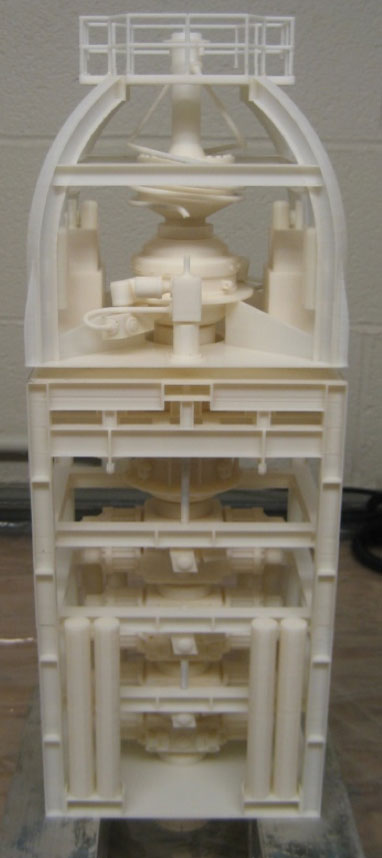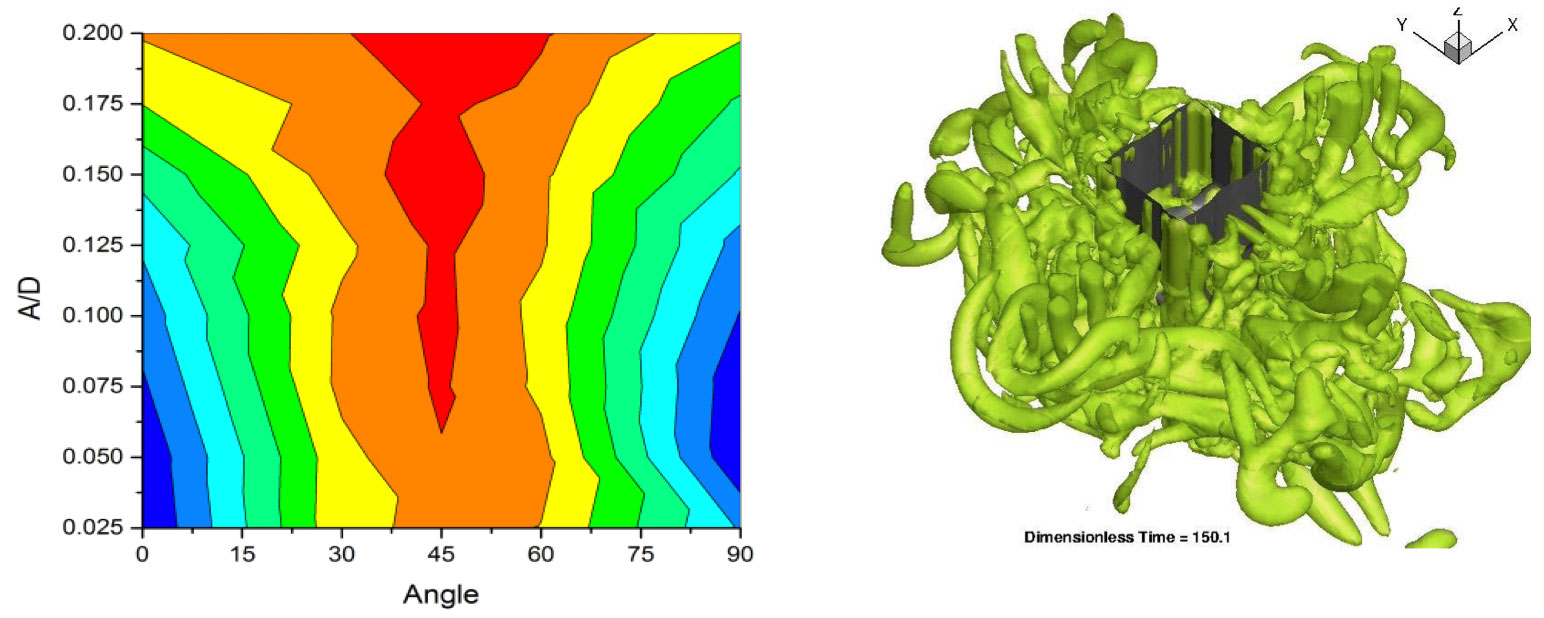Hydrodynamics of a Blowout Preventer
Motivated by safe design of ultra-deep offshore wells, an investigation of the hydrodynamic performance of a riser-BOP(Blowout Preventer) system has been conducted.
This initial study investigated the potential VIV characteristics of a new BOP design. Forced vibration experiments of a scaled model in a towing tank were used to build a database of hydrodynamic coefficients. These will then be incorporated into a detailed model of the global riser dynamics. CFD was used to reveal the underlying mechanisms.
Figure 1. 3D-printed, scaled model of the BOP.

 Figure 2. Left: Sample hydrodynamic database (Cd ) for BOP. Right: CFD on the BOP oscillating in still water highlights a large vortex ring.
Figure 2. Left: Sample hydrodynamic database (Cd ) for BOP. Right: CFD on the BOP oscillating in still water highlights a large vortex ring.Global Riser-BOP-Casing Model
 Figure 3. Riser with BOP undergoing wave-induced excitation.
Figure 3. Riser with BOP undergoing wave-induced excitation.
A global model of the riser-BOP-casing system has been developed. It is implemented into code, which includes the riser secWon encountering wave excitation at a point along its length, a BOP section with distinct mass and bending properties and with externally imposed hydrodynamic coefficients, and a soil/casing region modeled with equivalent springs and dashpots.